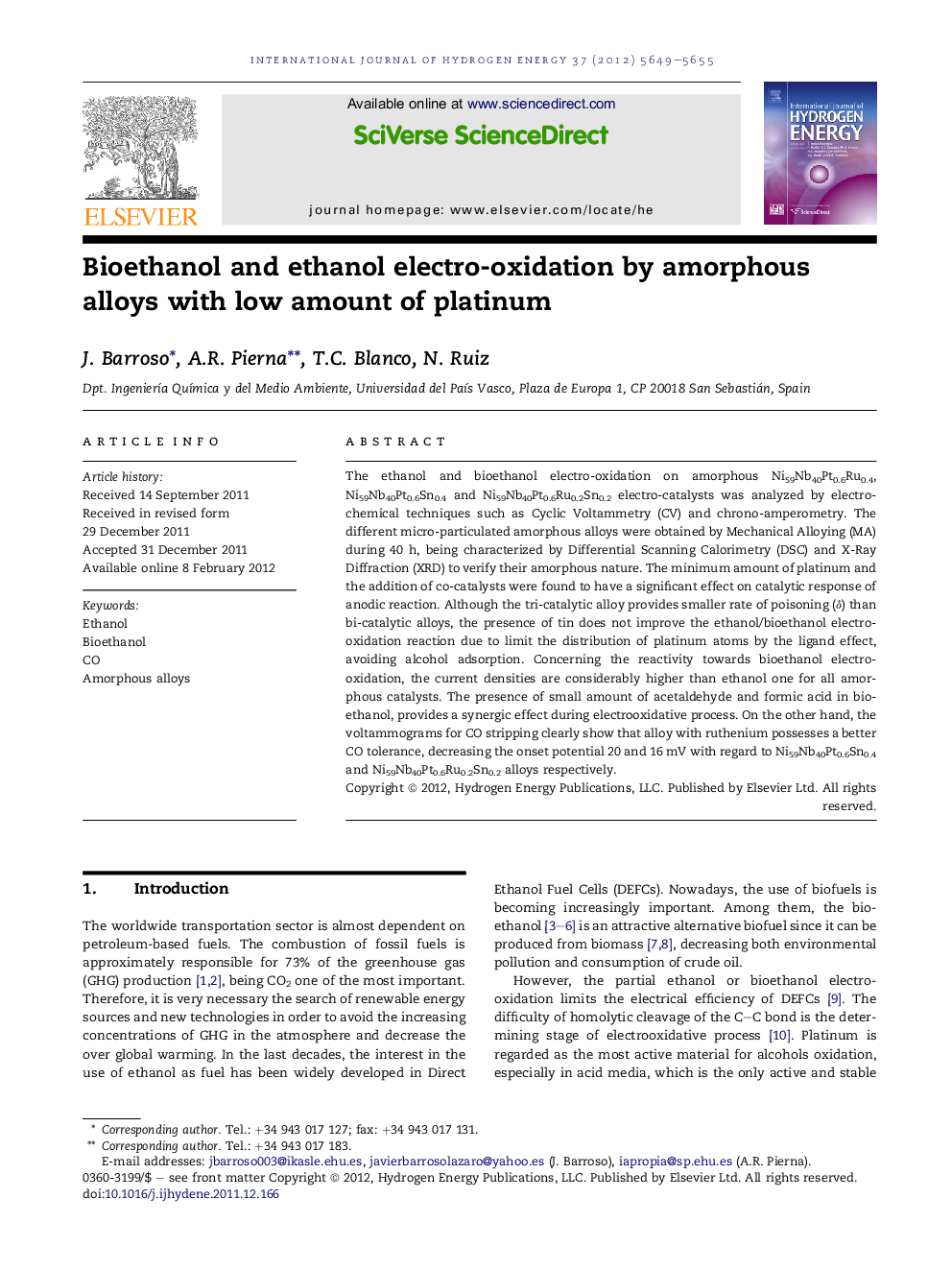| Article ID | Journal | Published Year | Pages | File Type |
|---|---|---|---|---|
| 1276854 | International Journal of Hydrogen Energy | 2012 | 7 Pages |
The ethanol and bioethanol electro-oxidation on amorphous Ni59Nb40Pt0.6Ru0.4, Ni59Nb40Pt0.6Sn0.4 and Ni59Nb40Pt0.6Ru0.2Sn0.2 electro-catalysts was analyzed by electrochemical techniques such as Cyclic Voltammetry (CV) and chrono-amperometry. The different micro-particulated amorphous alloys were obtained by Mechanical Alloying (MA) during 40 h, being characterized by Differential Scanning Calorimetry (DSC) and X-Ray Diffraction (XRD) to verify their amorphous nature. The minimum amount of platinum and the addition of co-catalysts were found to have a significant effect on catalytic response of anodic reaction. Although the tri-catalytic alloy provides smaller rate of poisoning (δ) than bi-catalytic alloys, the presence of tin does not improve the ethanol/bioethanol electro-oxidation reaction due to limit the distribution of platinum atoms by the ligand effect, avoiding alcohol adsorption. Concerning the reactivity towards bioethanol electro-oxidation, the current densities are considerably higher than ethanol one for all amorphous catalysts. The presence of small amount of acetaldehyde and formic acid in bioethanol, provides a synergic effect during electrooxidative process. On the other hand, the voltammograms for CO stripping clearly show that alloy with ruthenium possesses a better CO tolerance, decreasing the onset potential 20 and 16 mV with regard to Ni59Nb40Pt0.6Sn0.4 and Ni59Nb40Pt0.6Ru0.2Sn0.2 alloys respectively.
► Amorphous bi-catalytic and tri-catalytic alloys as anodes in DEFCs. ► Catalysts were obtained by mechanical alloying (MA). ► Bioethanol electro-oxidation provides better current densities for all alloys. ► The tri-catalytic alloy provides smaller rate of poisoning. ► The bi-functional effect of Ru and Sn takes relevance.
